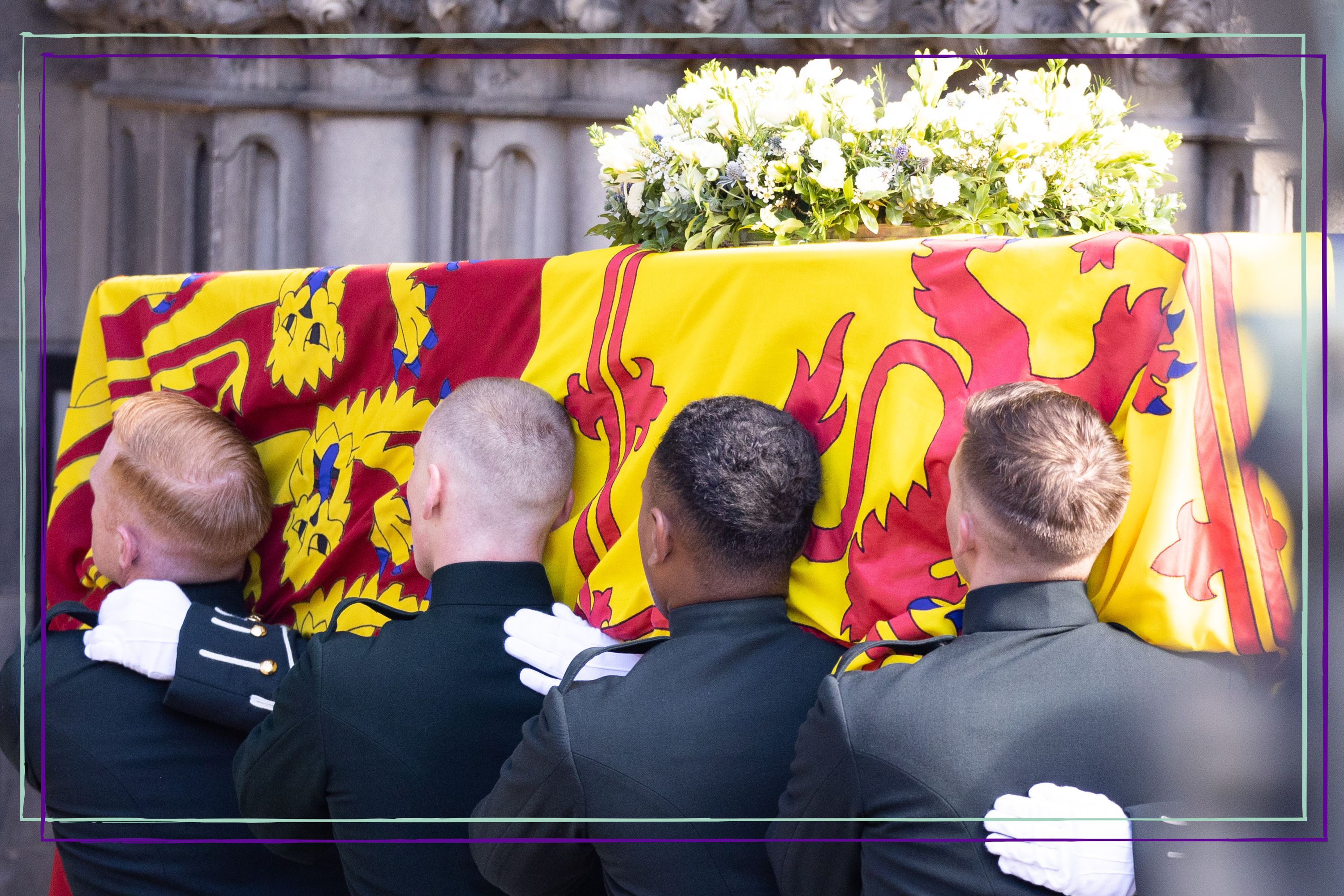When was the last state funeral? Plus other royal and ceremonial funerals
The Queen's funeral will be the first state funeral in the UK for nearly 60 years


Ahead of Queen Elizabeth II's funeral, we look back at when was the last state funeral and the funerals of other royal family members over the years.
Following the death of Queen Elizabeth II, the UK's longest ever reigning monarch, a state funeral is due to be held on Monday 19 September 2022 - with plenty of opportunity for the public to pay their respects both on the day of the service and the days leading up to it.
Almost 60 years have passed since the last state funeral in the UK, and few are familiar with how the event works, with many asking questions around if trains will be running and if there will be a bank holiday for the Queen's funeral. Here, we look back at royal funerals of the past and explain when was the last state funeral and what is the difference between a state funeral and a ceremonial funeral.
When was the last state funeral?
The last state funeral in the UK was held in 1965 and was for Winston Churchill. Because he was not a member of the royal family, agreement from both Parliament and the monarch was required for the funeral to go ahead.
According to The Independent, in a letter granting permission for the use of both Westminster Hall and St Paul’s Cathedral for the funeral, the late Queen Elizabeth II said that Churchill was a "national hero," who "in the hours of our greatest danger was the inspiring leader who strengthened and inspired us all." Her Majesty added that the people should have an "opportunity of expressing their sorrow at the loss and their veneration of the memory of that outstanding man who in war and peace served his country unfailingly for more than fifty years."
As a result, Churchill was the first non-royal to be granted a state funeral in the 20th Century and the event was broadcast by the BBC to over 4 hours of television coverage, with Richard Dimbleby as the sole presenter.
Other non-royals who have had state funerals include Prime Ministers William Gladstone in 1898, Lord Palmerston in 1865 and the Duke of Wellington in 1852, as well as Lord Nelson in 1806 after his death at the Battle of Trafalgar.
Parenting advice, hot topics, best buys and family finance tips delivered straight to your inbox.
When was the last state funeral for a royal?
The last royal to have a state funeral was King George VI, the father of Queen Elizabeth II, on 15 February 1952.
His coffin lay in Westminster Hall for three days before the funeral, where a short service was held and more that 300,000 people went to pay their respects. On the day of the state funeral, the service was held at St George's Chapel, Windsor Castle.
His coffin was originally placed in the Royal Vault, before being transferred to the King George VI memorial chapel upon its completion in 1969.
Queen Elizabeth II with her grandmother and mother after death of her father, King George VI, 1952: pic.twitter.com/Mw37azgiS7September 9, 2022
What is a state funeral?
A state funeral is a public funeral, usually reserved for the sovereign but can also be used to honour other distinguished figures or people of national significance.
The only monarch not to be given a state funeral in nearly 300 years was Edward VIII, who abdicated.
At state funerals, there is a military procession where the coffin is transported on a gun carriage to Westminster Hall, pulled by members of the Royal Navy. Usually, the body then lies in state there for around three days, before a procession to Windsor where the funeral service and burial takes place at St George's Chapel.
For Queen Elizabeth II's funeral, a service and procession will take place at Westminster Abbey - which will also be the site of King Charles' coronation -after her coffin leaves Westminster Hall and before travelling to Windsor.
State funerals are held so that members of the public can be involved in a national day of mourning.
What is the difference between a state funeral and a royal ceremonial funeral?
While state funerals and royal ceremonial funerals share many similarities, the main difference is how the gun carriage - which carries the coffin - is pulled.
The coffin is drawn by horses at a royal ceremonial funeral as opposed to members of the royal navy for a state funeral, but both will usually see a period of lying in state.
King Charles III attends a vigil for his late mother Queen Elizabeth II, standing beside her coffin at St Giles' Cathedral in Edinburgh with Prince Andrew, Prince Edward and Princess Anne. Members of the public were also able to enter the cathedral to pay their respects. pic.twitter.com/eiqxMgbVtTSeptember 12, 2022
Did Princess Diana have a state funeral?
Princess Diana did not have a state funeral, she had a royal ceremonial funeral because she was not the sovereign. She also was no longer an official member of the Royal Family at the time of her death.
After Princess Diana's death, her coffin lay in state in the chapel in St James' Palace, until her funeral was held on 6 September 1997 in Westminster Abbey. The service was watched by 32.1 million people and two thousand people attended the ceremony. She was then buried in Althorp Park, which is the home of the Spencer family.
Prince Philip also had a royal ceremonial funeral, after his death in April 2021. As the Queen's consort, the Duke of Edinburgh was entitled to a full state funeral, but had reportedly requested a ceremonial funeral instead.
Did the Queen Mother have a state funeral?
The Queen Mother also had a royal ceremonial funeral, rather than a state funeral, following her death in 2002 at 101 years of age.
She lay in state in Westminster Hall for three days before the funeral took place on 9 April, and an estimated 200,000 people paid their respects to the Queen Mother.
Her resting place is at St George's Chapel in Windsor, alongside her husband the former King and daughter Princess Margaret.
Video of the Week

Ellie is GoodtoKnow’s Family News Editor and covers all the latest trends in the parenting world - from relationship advice and baby names to wellbeing and self-care ideas for busy mums. Ellie is also an NCTJ-qualified journalist and has a distinction in MA Magazine Journalism from Nottingham Trent University and a first-class degree in Journalism from Cardiff University. Previously, Ellie has worked with BBC Good Food, The Big Issue, and the Nottingham Post, as well as freelancing as an arts and entertainment writer alongside her studies. When she’s not got her nose in a book, you’ll probably find Ellie jogging around her local park, indulging in an insta-worthy restaurant, or watching Netflix’s newest true crime documentary.